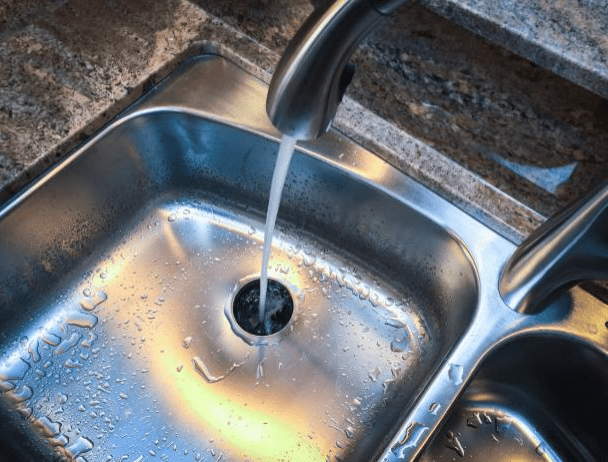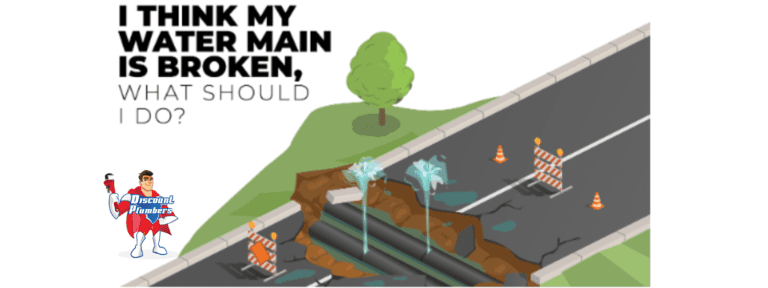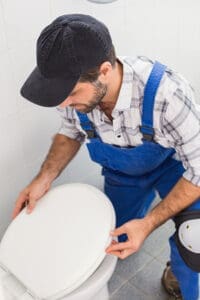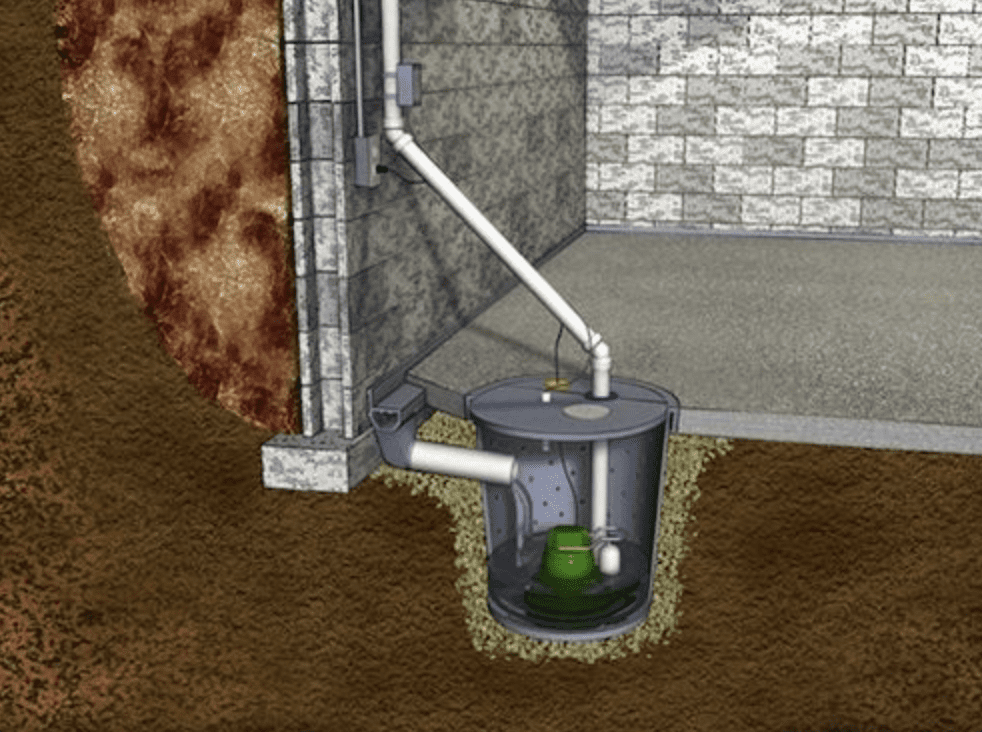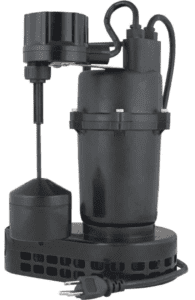Common Plumbing Problems Every Homeowner Needs to Watch Out For
As a homeowner, plumbing issues may arise that range from clogged drains to water leaks; however, most can be prevented through proper home maintenance practices.
From slow sink draining to signs of leaking pipes behind walls, there are various indicators to watch out for which suggest it may be time to call in a professional plumber.
Plumbing problems can be a nightmare for homeowners. They can cause water damage, increase water bills, and even lead to health problems if left unchecked.
In this article, we will explore some of the most common plumbing problems that homeowners need to watch out for.
Clogged toilets can be an inconvenient reality of life, especially when they occur frequently. A clogged toilet often indicates there is an issue in your plumbing system which needs professional intervention to resolve.
Your household plumbing system consists of PVC or ABS pipes that transport water and waste away from your home. Every time you flush, waste is transported through these pipes into the sewer line and eventually into a municipal or septic tank for disposal. Clogs can form in any part of this system, with toilets themselves often being the cause.
An S-Trap in your toilet serves to catch items that would otherwise go down the drain pipe, including any large objects too big for its pipes and cause tough clogs that require plunging or professional drain cleaning to resolve. Another source of clogs can be young children playing with the toilet to flush toys or objects into it; to prevent these incidents encourage your family members to always use a trashcan instead and not put anything directly down their pipes.
Many items should not be flushed down toilets, including sanitary products, baby wipes, cotton balls and paper towels. As these objects do not dissolve in water they can lead to serious clogs in multiple toilets – as well as broken pipes allowing dirt and debris build-up within their lines resulting in blocked sewer lines.
Clogged drains are one of the most prevalent plumbing problems, leading to backup water that is costly to rectify. Clogs typically result from soap scum, hair and other debris building up over time; however, more serious causes like broken pipes or roots infiltrating sewer lines could also contribute.
If your sinks, bathtubs or showers take an unusually long time to drain, this could be a telltale sign that their drains are clogged. Running hot water down them to melt away any ice deposits. Just be sure that before doing this to shut off the water first!
Gurgling sounds or bubbling water surfacing from your toilet, floor drain, or kitchen sink drain are a telltale sign of clogged drains. When oxygen releases from clogs into pipes it creates bubbles which push waste through.
Be wary of sudden puddles appearing in your yard that could indicate broken sewer lines or root infiltration. Regular drain cleaning will help avoid clogs in your pipes and ensure smooth functioning – you can try homemade remedies like baking soda and vinegar.
This article may interest you: Home Remedies For Clogged Sinks
Pipes are an integral component of your plumbing system, connecting fixtures to the mainline water main. However, pipes don’t stand the test of time, becoming worn and torn over time in older homes in particular.
You can avoid leaky pipes by being aware of warning signs like water puddles accumulating under fixtures, musty or moldy smells coming from around them and an unexpected increase in your water bill – such as an unexplained increase.
Your pipes are connected by curved joints that can become vulnerable to damage from extreme temperatures, overly high water pressure and corrosion. Most common leaks occur at these joints and are difficult to detect as they’re often hidden behind walls and ceilings – however listening for any clanging or banging noises may help identify its location.
If you suspect a leak, switch off your main valve immediately and contact a plumber as soon as possible. Leaks waste water, cause interior and exterior rotting and staining as well as becoming breeding grounds for bacteria and insects.
Leaks in pipes can be more than an inconvenience or costly repair cost; they can lead to flooding, mold growth and structural damage if left unrepaired. If you notice water puddles accumulating around your property or unexplained increases in your water bill – contact Discount Plumber’s licensed plumber immediately so they can fix the problem for you!
Low Water Pressure
Though many homeowners can try their hand at fixing dripping faucets or clogged drains themselves, low water pressure requires professional assistance. Left unchecked, these issues could escalate into costly plumbing issues that cost money while decreasing efficiency in your home.
If your water pressure drops significantly, the first step should be identifying all locations and fixtures impacted. This will help narrow down the source of the issue faster and lead to finding solutions quicker.
Your pipes can become clogged over time with limescale and minerals that accumulate, restricting water flow. Older galvanized steel pipes are particularly susceptible to becoming blocked over time.
Corrosion of your plumbing lines can also contribute to decreased water pressure. As with blood arteries, corrosion narrows your pipe interiors, restricting water flow. While you may be able to address some areas by clearing away debris, in many cases new sections will need to be installed altogether to restore full functionality of the plumbing system.
One of the primary sources of low water pressure in your home can be an underperforming plumbing system, typically seen through its plumbing. Check your main shut-off valve (typically found near a hose bib) as well as individual fixture shut-off valves to make sure they are fully open and operable.
Dripping Faucet
Dripping faucets can be quite an annoyance. Not only will it disturb your peace and quiet, but their steady drip can quickly rack up your water bill as well as be an ideal breeding ground for bacteria and germs that could potentially harm us – thus prompting immediate attention when the issue becomes evident. It is vital that when an issue of this nature arises it be addressed immediately in order to avoid unnecessary inconvenience and high bills.
This can be caused by many different things, but one common culprit is an “O-ring”, a small rubber ring attached to cartridge type faucet stem screws that wears out over time, leading to leakage around its handle and eventually leading to more serious problems with your faucet itself. Replacing an O-ring can often be quick and simple fix!
An additional source of dripping faucets can be due to a deteriorated valve seat, which sits between the compression mechanism and spout and can become worn over time due to hard water sediment build-up. A plumber should usually be able to easily rectify this situation.
Sometimes this problem can become much larger and require replacing an entire faucet altogether, possibly due to corroded valves, worn-out washers or corrosion in the pipes themselves. Therefore, it is wise to contact a professional plumber as soon as you detect a dripping faucet – this will save both money and stress in the long run!
An endlessly running toilet wastes water and increases utility bills, not to mention being extremely annoying when trying to prepare for work in the morning or sleep at night. This problem often stems from improper connections between flush level and rubber flapper – our experts can quickly identify its source and repair it as soon as possible, saving both time and money!
Every time you flush, your toilet should run for just a few seconds to refill itself before stopping again. If it keeps running continuously instead of only briefly refilling itself when flushed, this indicates a potential waste of hundreds of gallons each day. A malfunctioning float or fill valve could be responsible for this waste of water; but before calling for repair services there are other areas you can check.
Lift the lid of your toilet tank to reveal an overflow tube made of white plastic, connected to an overflow tube through which is an overflow chain and lever system connected to a rubber flapper.
When initiating flush with your handle, this chain pulls up and opens the flapper for water flow from bowl into tank – while at the same time its float rises and lowers in tank to indicate when bowl is empty or full, indicating when fill valve should open and close.
Over time, rubber flappers can deteriorate and no longer seal correctly, allowing water to leak from the tank into a bowl continuously. Easily remedied with new flappers available at local hardware stores.
This article may interest you: How to Fix a Running Toilet
Hot water heaters are essential home appliances that help everyday tasks run more smoothly – from laundry washing and cooking, to taking an evening shower after a long day at work. As such, homeowners must keep an eye out for signs that their hot water heater may need repair or replacement.
Signs that your water heater may be malfunctioning include not enough hot water for your needs, often caused by mineral deposits forming against its heating elements and leading to reduced pressure and temperature of the water being produced. Another telltale sign could be brownish water due to corrosion or issues with its temperature and pressure relief valve.
If your hot water heater is showing signs of puddling at its base, it may be time to seek professional assistance for repair. Puddling is usually due to slow leaks from its metal tank structure; these could include sediment accumulation, broken steel liner leakage, excessive rust build-up or even an inoperable temperature and pressure relief valve.
More times than not, they are not reparable and need to be replaced. If your water heater is showing signs of not working properly, this article will help you to determine if it’s time to replace it. When to replace a water heater.
Your main waterline connects your home to either public or private water supply systems. This underground line supplies all of your appliances, fixtures and faucets in your home with fresh drinking water. Should it break or leak in an unexpected fashion it could potentially have severe repercussions for all those using its services.
Like everything, water lines have their own natural lifespan and eventually wear away with age and use. Certain lines may also be susceptible to environmental factors like fluctuating temperature or shifting soil conditions that cause more severe damage than expected. Being aware of signs that indicate water line breaks will allow you to get it repaired as soon as possible.
One telltale sign of a broken water line is an unexpected wet spot in your yard, either caused by its leakage or by leaks inside of your house (e.g. the toilet flapper not being secure enough). Water lines often produce strange noises when they’re broken such as rumbling, hissing, or gurgling when their flow stops completely – as well as increasing water bills or decreasing pressure considerably.
In certain instances, replacing an older water line may be preferable to repairing it. If the existing line consists of galvanized metal – potentially subject to lead issues – repairing may not be allowed where you live and 50 year-old pipes should likely be upgraded with modernized materials instead of being repaired.
Home sewer lines are responsible for collecting all wastewater produced within a home and when they become blocked or damaged it can create major headaches for homeowners. Any issues with your main sewer line must be taken seriously to prevent sewage backup or other forms of damage to property and residents alike. Here are some of the more frequently seen issues associated with residential sewer lines.
What Are the Signs of a Sewer Line Problem? One telltale sign of a sewer line problem is slow draining. When multiple drains in your house become regularly blocked up, this is an indicator of an issue with your sewer system. Another red flag would be unusual sounds emanating from the toilet itself such as bubbling or gurgling when not being used; these may indicate possible trouble within its pipes.
Mineral buildup is one of the main causes of clogged sewer lines. Over time, minerals such as calcium and magnesium accumulate in pipes and gradually weaken their integrity – therefore making regular professional maintenance essential to protecting the integrity of your residential plumbing system.
If you need sewer line repair in Minneapolis, don’t hesitate to call our team of experts. We provide two effective options:Cured-in-place pipe lining and trenchless sewer line replacement using special tools called “bursting heads” that simultaneously destroy old lines while simultaneously installing new ones.
Unlike traditional digging methods, this method is minimally-invasive and long-lasting results. Pipe bursting can even help repair more severe forms of damage such as total separation or significant sagging that cannot be fixed with cured-in-place pipe lining alone such as complete separation or significant sagging issues; also see “pipe bursting.”
Signs of water damage in the basement include visible stains on walls, floors and ceilings as well as more subtle indications such as musty smells, mold and mildew growth, flaking paint or peeling walls. If any of these occur in your home it’s imperative that immediate steps be taken – this may save costly structural repairs as well as valuable items stored there from being damaged by moisture damage.
Moisture from outside can seep into a basement through cracks, joints, window wells and porous concrete surfaces, such as cracks. Rain or groundwater that soaks through can cause foundation shifts and flooding; while an insufficient grading plan and poor footing drains could also contribute to water seepage into the foundation.
If you notice white, powdery or glistening substances on your basement walls, it could be efflorescence – a harmless mineral salt that seeps into concrete and then travels through waterways back out again to the surface. While efflorescence poses no health concerns, it’s nevertheless an unsightly symptom of moisture issues in your basement that should be addressed immediately.
An indicator of water penetration into a basement is its floor sinking or gapping; this could be caused by anything from leaky shower, toilet and faucet fixtures to malfunctioning washing machines or dishwashers, cracked or corroded pipes or leaky metal water heaters or storage units rusting with moisture in them – these signs point toward active leaks!
Mildew in the Attic
Most attics don’t have plumbing in them, but some might. Also, any attic that’s behind a wall that’s been affected by an overflowing gutter or clogged downspout could have mold and mildew problems.
Your attic is one of the primary breeding grounds for mold to flourish in your home, often being an area that rarely receives visitors and becoming an undetected source of moisture accumulation. This moisture accumulation can pose health concerns as well as cause material issues in both your attic and throughout the rest of your house – possibly even damage your roof itself!
Most attic mold growth is the result of several contributing factors. Lack of ventilation is one such factor; keeping your attic well ventilated may help lower its risk for mold growth. Moisture accumulation also plays a significant role, as mold thrives off moisture accumulation and quickly spreads throughout an attic if left to its own devices.
Smelling of Mold
A musty smell coming from your attic is an undeniable indicator that there may be mold issues present, often accompanied by black discoloration of wood surfaces in your attic.
Wet Insulation
Wet insulation in your attic is a telltale indicator of mold growth. Once exposed to moisture, its insulation properties deteriorate rapidly, and warm air leaks out through its pores into your home via the attic.
To properly diagnose the type of mold present in your attic, we advise taking a “tape lift sample.” This involves placing a piece of laboratory tape over suspected spots of mold and sending it off for analysis at a laboratory – this will reveal its species name as well as give an idea as to its severity.
Unexplained Wet Spots on the Lawn
As a homeowner, your plumbing system plays an integral part of daily life, from washing dishes and showering to cooking and drinking. Clogged drains or leaky pipes that damage or make your home inhabitable should never be tolerated.
To prevent these problems altogether it is best to have regular plumbing maintenance, repair, replacement services on hand to keep things in working condition – this ensures maximum use from your space!
Any unexplained wet spots on your lawn is often an indicator of an underground plumbing issue. While these wet spots could be due to various reasons, most often it comes down to either a water line leak or sewer line leak causing moisture issues in certain spots of your yard.
These leaks are easy to diagnose as you simply shut off irrigation system and check area for moisture. If that area still feels damp after doing this then disconnect water meter; if it still reads water flow this indicates an underground plumbing leak that requires professional repairs immediately.
Sewer leaks may be harder to detect, but one sure sign of one would be an unpleasant smell coming from your sewer line. A sewer line leak poses serious health hazards, including creating the perfect breeding grounds for dangerous bacteria.
If a foul smell persists for more than 24 hours after turning off the water supply, stop all activities immediately and check for signs of leakage in that area. If one exists, call in professionals right away and test it thoroughly to detect whether there’s an active leakage problem.
Expensive Water Bill
An increase in your water consumption may indicate a plumbing problem. Or it could simply be caused by water-intensive activities or new household equipment – like an upgraded pool or sprinkler system using more water than its predecessor did.
To combat this effect, opt for appliances marked as high efficiency or have the WaterSense logo to reduce their consumption; cover swimming pools when not in use to decrease evaporation and unnecessary usage of precious resources like water.
Leaky toilets and faucets can often lead to high water bills. If this seems likely, shut off all water sources before checking all fixtures for leaky shut-off valves or cartridges that could waste 17 gallons daily; act immediately! A dripping faucet wastes as much water per day.
Your water meter could also be reading higher than usual; in such a situation, it is vital that you contact the local water company so they can conduct a complete meter reading and maintenance check on it.
Summer months tend to bring with them higher water bills due to increased outdoor activity. Many people may be watering gardens, filling swimming pools and/or irrigating lawns – however this should not cause undue concern; simply taking shorter showers or switching to low-flow toilets could significantly cut water consumption and save money in the process.
What to Do in a Plumbing Emergency?
Don’t panic! Plumbing emergencies can happen at any time, and it is essential to know what to do when they occur. Taking the necessary steps to prevent further damage and contacting a professional plumber can save you time, money, and unnecessary stress.
Remember to turn off the water supply, try to locate the source of the problem, and avoid attempting to fix the issue yourself unless you have the proper knowledge and tools. With these tips in mind, you can be prepared for any unexpected plumbing emergency and ensure that your home remains safe and secure.
Conclusion
Don’t hesitate to contact us. Our team of experienced and licensed plumbers is always ready to provide you with top-notch services that meet your needs and exceed your expectations. Whether you need a simple repair or a complex installation, we have the skills and expertise to get the job done right the first time.
We take pride in our work and strive to ensure that our clients are satisfied with our services. So, if you’re looking for a reliable and trustworthy plumbing company, look no further than Discount Plumbers. We are located in Minneapolis, Minnesota but provide “plumber near me” services in 65 surrounding metro-areas.
We are committed to providing you with the best possible service and ensuring that your plumbing needs are met in a timely and professional manner. Contact us today via our web form or call us at the number below to schedule an appointment or to learn more about our services.

